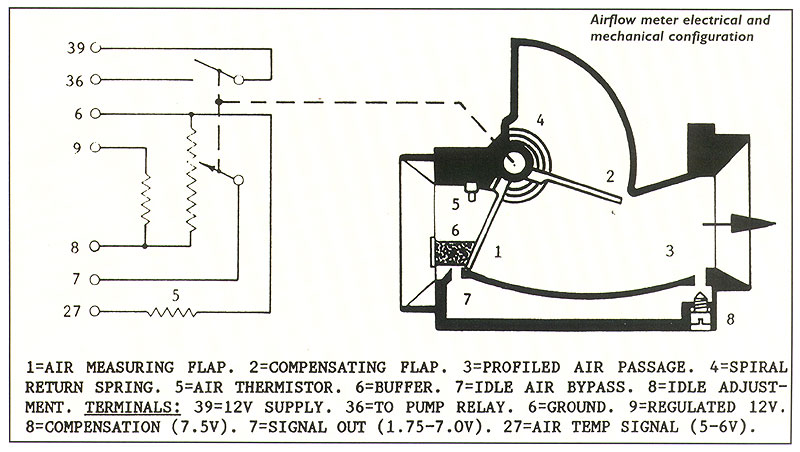Problem: the wire can't tell inflowing air from outflowing air. The same mass of air might even pass the wire four times during the inlet phase and still end up outside of the crankcase.
Shielding one side of the wire does help a bit, but not enough. A second wire downstream of the first one, and some clever software, might be a solution, but at the cost of increased inlet tract length.
.
A spit of fuel on the wire confuses things too.
I thought we were considering port injected 2 strokes. But yes, I see the problem. Surely at the entrance to an airbox the flow would essentially be one way.
The multidirectional airflow would be a problem with any measuring device. The flapper valve would become a multipurpose reed valve. That sort of sounds like disc valve defeat.
True, but vertically down the B port. Not as much but sadly some fuel still finds its way out of the inlet. An air flow meter on a large airbox is a good idea, and maybe the way the RONAX and SUTER do it, who knows? but it is not my plan, I think there is a better less cumbersome and more direct way.












First startup with the new cylinder, the rattling is the clutch, no springs, dragrace setup.
Overall it went nice.
Kickstarter rubbed against the frame and a blindnut in the floatbowl got loose therefor it died on me, and the fuel on the floor.
The blindnut is blocking a hole in the bowl as i haven´t got the powerjet mounted yet, it is on one of my other carbs.
[/QUOTE]

Why not see it as a standard event?
You close the throttle and the average (blip filter) TPS position drops, the exhaust cools. If the average position drops below a certain threshold a timer is started. The timer stops at the time the pipe is considered "cold".
If the average TPS position then exceeds a threshold you can use a formula such as (for simplicity assuming cooling time equals heating time):
TPS input - (Cooled time/Cold time * Injection correction) = TPS output.
Cooled time = Cooled time - 1 till cooled time = 0
It'sa KISS bandaid. No sensor problems.






I have mentioned it before, a L-jetronic air meter should probably work without mods, just alter the springtension.



pretty sure this is a fuel injected twostroke, single cylinder too. Hot bulb type, ie squirt the fuel at the hot bulb in the combustion chamber. Thought about that TZ?
https://youtu.be/psSkJ5K709o
Well actually it was Flettners original idea to measure the crankcase pressure at a set point. He suggested a sample and hold approach and tried it with a small rotating valve timed to the peak crankcase pressure. It showed promise on his 360. I am just trying to refine it a bit by using a small PLC.
Tzee, I reckon that any device like a vane style air flow meter, or even a hot wire, if it has an adequate damping volume downstream to ensure a nett one way flow to the engine, will be so slow to respond that it’s out of the question. You need a indicative signal every rev.
As you suggest, sampling crankcase pressure at some suitable fixed point might be the go, even with Fletto’s opening valve. Either way, it’ll need a presure sensor with good response.
Brett suggested some time ago an IR sensor that was set into the top of a transfer port, aimed into the cylinder. With this, essentially sampling at a fixed crank angle, one could infer the temp, hence whether combustion took place or not, then inject the right amount of fuel possible for the same cycle (by altering the injector closing angle point), or certainly the next cycle.
"Success is the ability to go from one failure to another with no loss of enthusiasm.”
For good response I am going to try a MAP sensor (which we know are relatively slow) to get the ambient outside air pressure for a base line and use a Piezo for the positive crankcase pressure pulse. Piezo's are fast in comparison. All I am looking for is relative changes in maximum crank case pressure.
The evolution of KTM's EFI cylinders. In conversation maybe about 2012 Flettner advised them go for vertically down the B ports like he has on the BigHorn. They told him they would do something more sophisticated.
Cylinder on the left is their sophisticated effort, direct injection, middle is direct port injection, cylinder on the right is vertically down the B ports just like Flettner suggested and it must be what works best as they are currently running them on their ""revolutionary"" fuel injected bikes.
Flettner is certainly worth listening too.

There are currently 34 users browsing this thread. (0 members and 34 guests)
Bookmarks